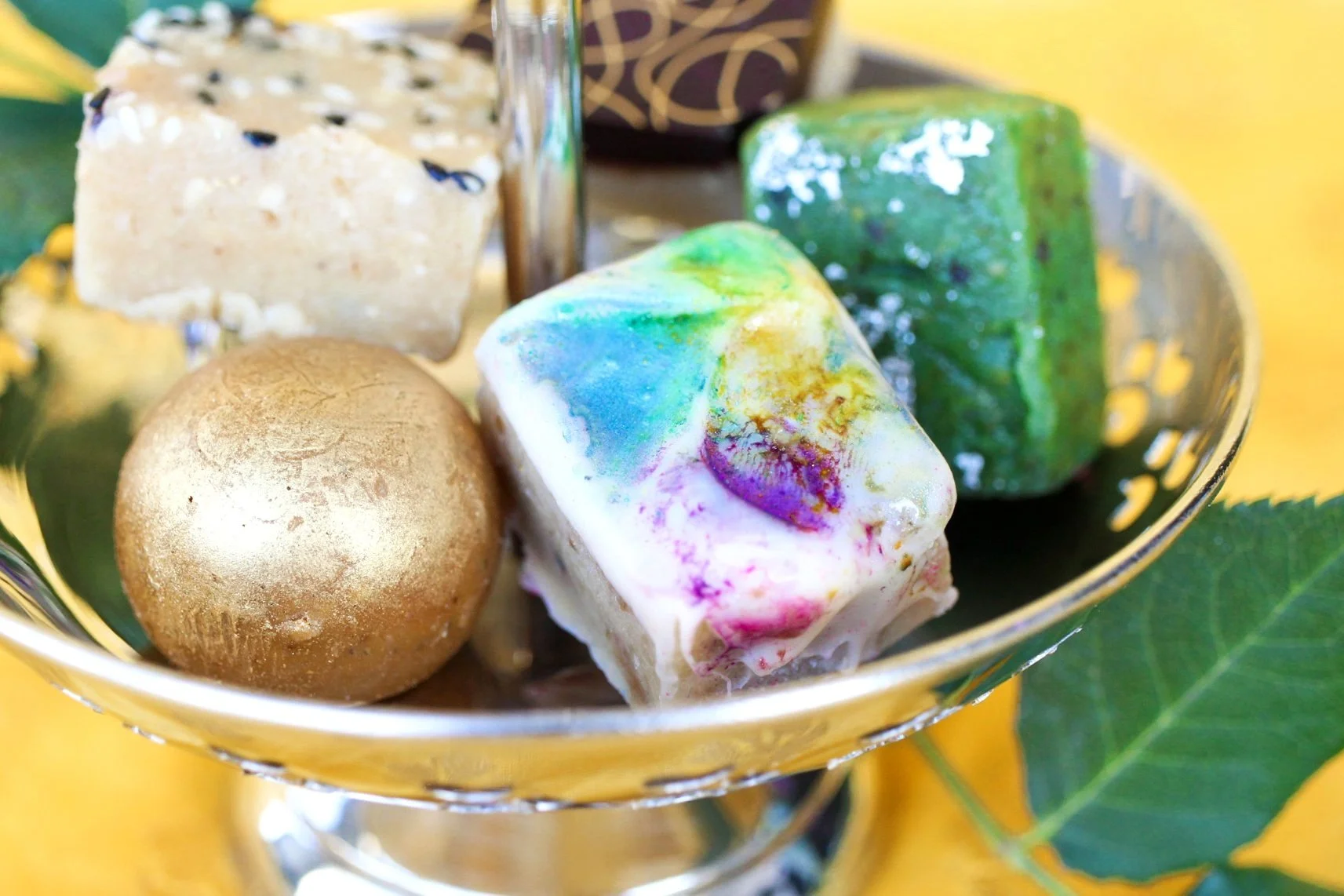DIVING INTO THE ORIGIN OF CANDY
The story of candy starts in South Asia where sugarcane originated.
Sugarcane was first cultivated by the Indus Valley civilization in what is now India. When you think of candy, you might not immediately think of India, but modern candy making owes its craft to the innovative art of refining sugar that was invented 8,000 years ago on the Indian subcontinent.
Today, India’s bustling mithai shops, elaborate mithai culture, and jaggery production are mainstays of the country’s inventive past.
BEFORE CANDY THERE WAS KHAANDA
The English word candy comes from the ancient Sanskrit word khaanda, which describes sugarcane juice that was boiled and dried into small hard pieces. The first proto-candy made with sugarcane was distinct from desserts sweetened with honey and dried fruit elsewhere in the world.
According to candy historian Samira Kawash, it wasn’t until the Middle Ages that sugar was introduced to Europe from Asia and India through colonization. It took awhile for candy to become a developed culinary practice and for a long time was a luxury only available to the wealthy.
In the 18th century, candy became a vehicle for herbal medicines or sometimes prescribed as a remedy all by itself. A spoonful of sugar really does help the medicine go down. It wasn’t until the 19th century that the apothecary and confectionery started becoming separate professions in the U.S.
SAVOR THE TASTE OF HISTORY
Next time you eat a piece of candy or bite into a luxurious mithai, remember that it’s a piece of ancient Indian history that has carried its sweetness across the world.



